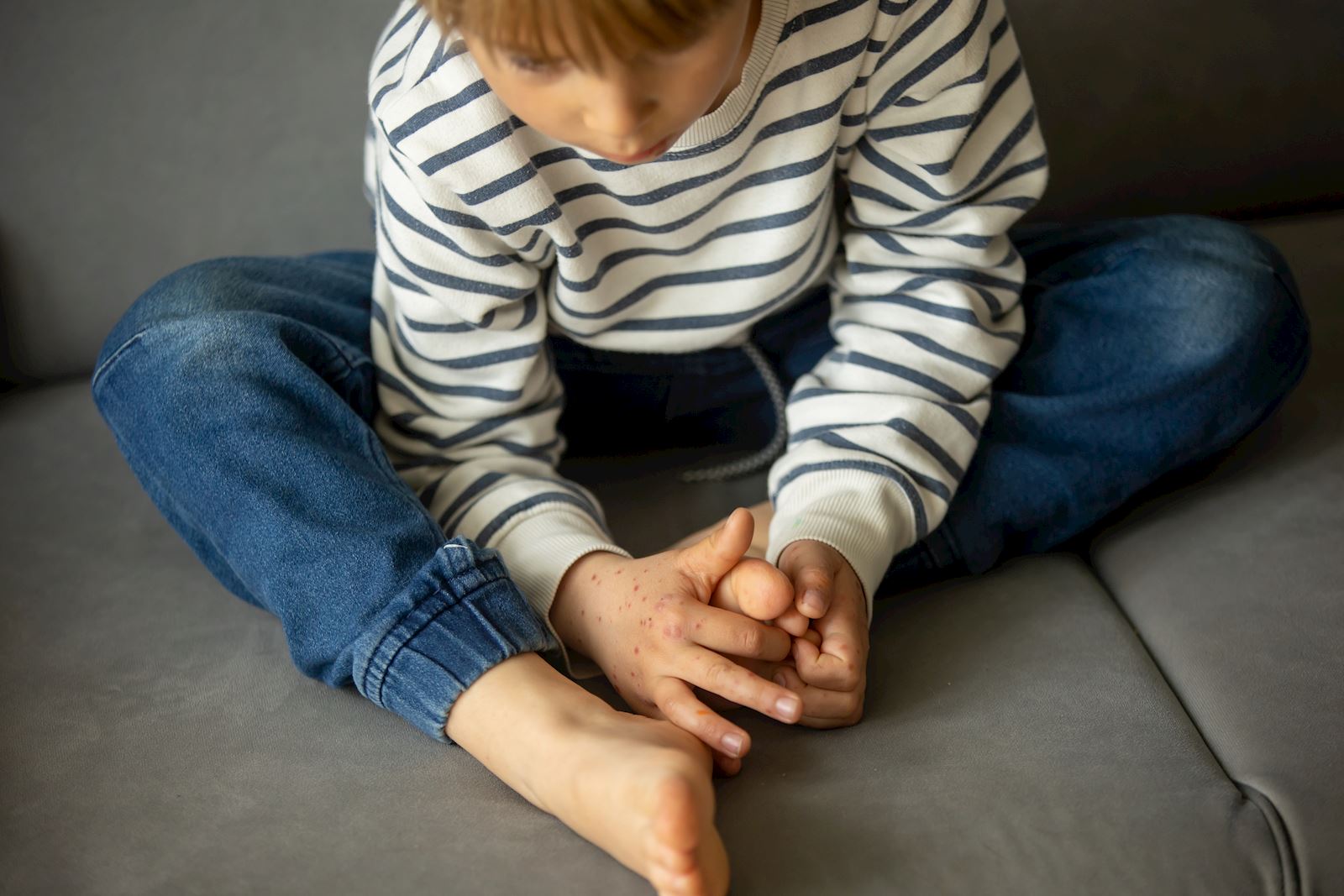If you’re a parent, you know there are few phrases more dreaded than hand, foot, and mouth. Once this highly contagious illness makes an appearance, it spreads like wildfire through schools and daycare centers, leaving children uncomfortable and parents scrambling for relief. South Waukee Pediatrician Dr. Joshua Kindt shares what causes foot, hand and mouth disease and how to care for your child.
What is hand, foot and mouth disease?
Hand, foot, and mouth disease (HFMD) is a common viral illness caused by coxsackieviruses, which leads to painful rashes or sores in and around the mouth, on the palms, and on the soles of the feet.
“Each strain of HFMD is unique, so each time a child gets HFMD, it could present a bit differently,” says Dr. Kindt. “The extent of the rash, how ill the child feels, and how dramatic the fever is can be different every time. Sometimes you get the rash in one location, sometimes you get the rash in all three locations.”
Although HFMD is most common in infants and children younger than 5 years old, older children and even adults can get the virus too. It spreads easily through everyday interactions, including:
- Droplets with virus particles spread after a person sneezes, coughs or talks
- Objects and surface with the virus particles
- Fluid from blisters
- Bodily fluids
“Coxsackieviruses are very contagious and can spread quickly through day care rooms,” says Dr. Kindt. “The spread can be reduced by hand washing, sanitizing and keeping fingers out of mouths and noses.”
What are the telltale signs of HFMD?
HFMD can be tricky to identify at first, as it symptoms often mimic those of a cold or flu. However, as the virus progresses, certain signs become more apparent. The most common symptoms include:
- Fever
- Sore throat
- Painful mouth sores that blister
- Rash on the hands and feet
“There are many strains of the virus, so unfortunately, your child may contract it many times,” says Dr. Kindt. “In addition to these symptoms, some children may experience a lack of appetite, irritability, or fatigue. The mouth sores may make it difficult for children to eat and drink, so it is essential to monitor their hydration closely.”
What are treatment options for HFMD?
In most cases, HFMD resolves itself within 7 to 10 days with minimal or no medical treatment. To ease your child’s symptoms, Dr. Kindt suggests taking over-the-counter medications to relieve fever and pain caused by mouth sores.
If the sores from the rash are open, applying bacitracin can help prevent secondary infections," says Dr. Kindt. “Bacitracin is safe to use on a baby’s or toddler’s face and hands, so there’s no need to worry if a small amount comes into contact with their mouth or eyes.”
Hydration is also key. Offer your child plenty of fluids, such as water, milk or electrolyte solutions to prevent dehydration. Soft, cold foods like yogurt, applesauce or popsicles can be soothing for sore throats.
When it comes to returning to school or daycare, Dr. Kindt recommends waiting until your child is fever-free for at least 24 hours and their blisters have healed. This reduces the risk of spreading the illness to others.
When should I be concerned?
While HFMD is usually mild, there are certain warning signs that warrant a visit to your healthcare provider:
- Fever lasting longer than three days
- Complaints of a stiff neck
- No urination in eight hours, which may signal dehydration
- Acting unusually sick or extremely sleepy
“Hand, foot and mouth disease is always miserable, but rarely dangerous,” Dr. Kindt explains. “The feature that is most likely to lead to an ER visit or hospital stay is dehydration due to throat sores. This becomes clear when they have reduced urine output and dry lips. This requires a visit to the doctor to consider if they need IV fluids.”
Hand, foot and mouth disease can be frustrating, but with proper care and attention, your child will be back to normal in no time. If you have questions or concerns about hand, foot and mouth, talk with one of our board-certified pediatricians or schedule online.


